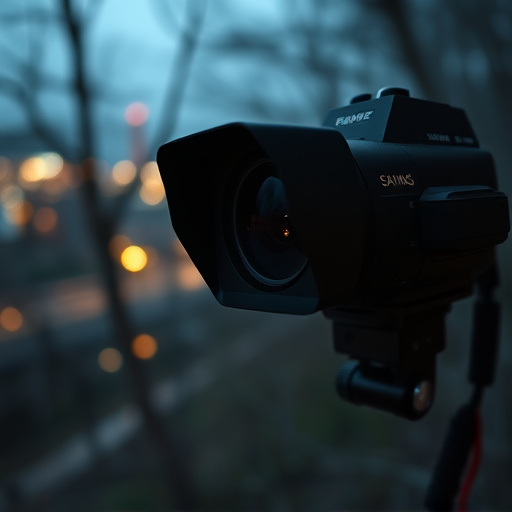Motion Activated Spy Cameras leverage advanced PIR and dual-element sensors to minimize false alarms and extend battery life crucial for covert surveillance. Energy management strategies and smart activation protocols ensure reliable operation in remote locations without frequent intervention. Advanced signal scanning techniques, coupled with longer battery life, revolutionize undetected surveillance while raising legal and ethical concerns regarding privacy and consent.
Uncover the art of hidden recording with advanced signal scanning methods. This guide explores innovative motion sensor technology, crucial for activating covert cameras. Learn how to optimize battery life in these discreet devices, ensuring extended surveillance. Discover sophisticated signal scanning techniques to enhance detection accuracy. Navigate legal and ethical boundaries while harnessing the power of motion-activated spy cameras. Maximize the potential of these hidden assets with practical strategies.
- Understanding Motion Sensor Technology
- Battery Life Optimization Strategies
- Advanced Signal Scanning Techniques
- Legal and Ethical Considerations
Understanding Motion Sensor Technology
Motion sensor technology plays a pivotal role in hidden recording device signal scanning, especially for devices like motion activated spy cameras. These sensors are designed to detect any form of movement within their range, triggering the camera to capture footage or activate recording. Understanding how they work is crucial when it comes to optimizing battery life – a key consideration for portable surveillance equipment.
Modern motion sensors employ various methods such as passive infrared (PIR) technology, which detects heat differences, and dual-element sensors combining PIR with accelerometers for enhanced accuracy. In the context of spy cameras, this means minimizing false triggers caused by environmental changes or accidental movements. Efficient energy management strategies, like low-power modes and smart activation protocols, can further extend battery life during periods of inactivity, making these devices more versatile and reliable for covert operations.
Battery Life Optimization Strategies
Extending the battery life of a motion-activated spy camera is crucial for continuous surveillance, especially in remote or hard-to-reach locations. One effective strategy is to employ power-saving modes, allowing the device to enter a low-power state when not triggered by movement. This can significantly reduce energy consumption and prolong the lifespan of the battery. Additionally, optimizing the sensitivity settings of the motion sensor ensures that the camera only activates when necessary, further conserving power.
Regular maintenance, such as replacing old batteries or using high-capacity rechargeable ones, is another way to enhance battery life. Using these strategies in conjunction with efficient design and smart power management features can ensure a motion-activated spy camera remains operational for extended periods, making it an effective tool for long-term monitoring without frequent intervention.
Advanced Signal Scanning Techniques
In the pursuit of undetected surveillance, advanced signal scanning techniques have emerged as a game-changer in the realm of hidden recording devices. One such innovative approach is the integration of motion-activated spy cameras, which not only capture high-quality footage but also extend remarkable battery life, ensuring prolonged observation without frequent replacements. These cameras utilize sophisticated sensors to detect even the slightest movements, triggering recordings and conserving power simultaneously.
Moreover, the implementation of advanced signal scanning methods involves fine-tuning frequency ranges to pinpoint specific devices’ unique signals. This precise targeting allows for the identification and neutralization of hidden recording devices, be it in a private residence or a public space. By employing these cutting-edge techniques, professionals can effectively navigate complex environments, ensuring both privacy and security without leaving behind any traces of their presence.
Legal and Ethical Considerations
The use of hidden recording devices raises significant legal and ethical concerns. In many jurisdictions, unauthorized surveillance is a criminal offense, with strict penalties for those caught engaging in such activities. For example, installation of motion-activated spy cameras without consent can violate privacy laws, leading to civil lawsuits or even imprisonment. Ethical considerations are equally important; secretly recording conversations or activities can cause severe harm to individuals’ trust and emotional well-being.
Moreover, factors like battery life of motion-activated spy cameras play a role in these debates. Longer battery life increases the potential for unauthorized surveillance to extend over longer periods, amplifying privacy and ethical risks. As technology advances, it’s crucial for users to understand legal boundaries and maintain ethical standards when employing hidden recording devices, ensuring respect for personal privacy and fostering trust in public spaces and relationships.
Hidden recording devices, often disguised as everyday objects, rely on advanced motion sensor technology and signal scanning methods for activation. Optimizing battery life is crucial for these devices’ longevity and effectiveness, especially in remote or hard-to-reach locations. By employing sophisticated signal scanning techniques, such as directional antennas and frequency analysis, users can ensure precise triggering without unnecessary power consumption. However, it’s essential to navigate legal and ethical boundaries, respecting privacy rights while leveraging the benefits of motion-activated spy cameras. Balancing these factors empowers individuals to make informed decisions regarding the responsible use of hidden recording devices, particularly in light of the growing demand for enhanced security and surveillance solutions.
